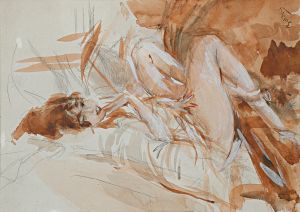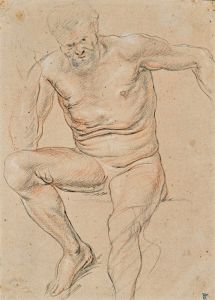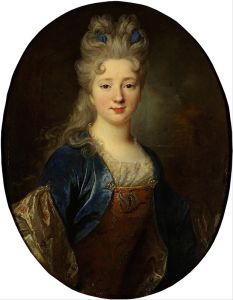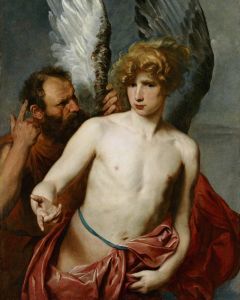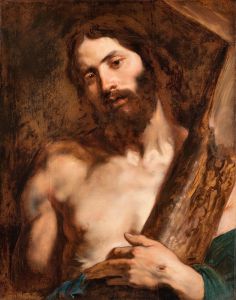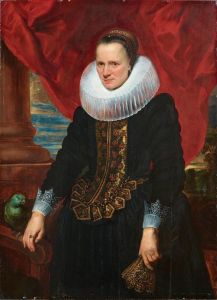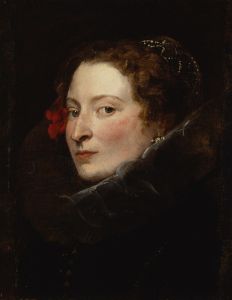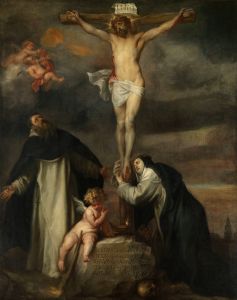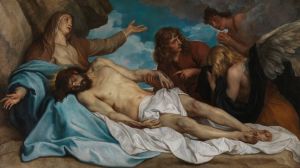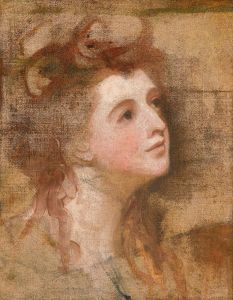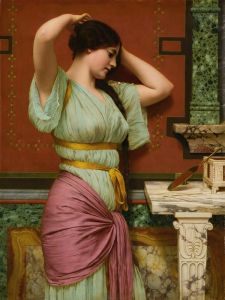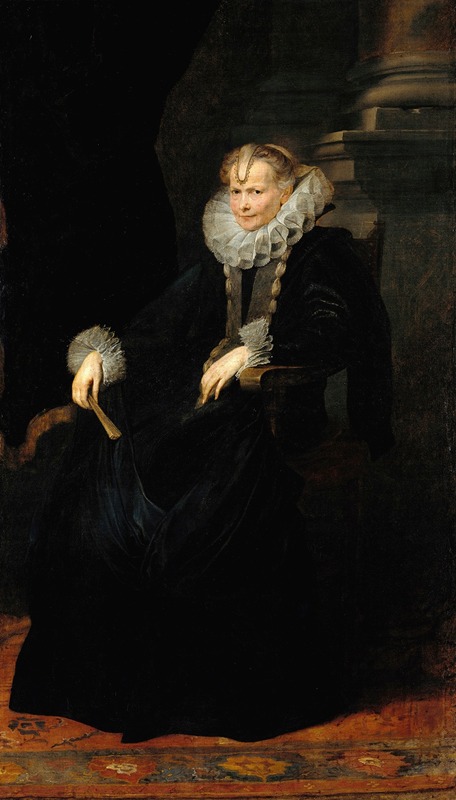
Portrait of a Genovese Lady
A hand-painted replica of Anthony van Dyck’s masterpiece Portrait of a Genovese Lady, meticulously crafted by professional artists to capture the true essence of the original. Each piece is created with museum-quality canvas and rare mineral pigments, carefully painted by experienced artists with delicate brushstrokes and rich, layered colors to perfectly recreate the texture of the original artwork. Unlike machine-printed reproductions, this hand-painted version brings the painting to life, infused with the artist’s emotions and skill in every stroke. Whether for personal collection or home decoration, it instantly elevates the artistic atmosphere of any space.
"Portrait of a Genovese Lady" is an exquisite painting by the renowned Flemish Baroque artist Anthony van Dyck. Van Dyck, who lived from 1599 to 1641, was a prominent portraitist of his time, celebrated for his ability to capture the elegance and grace of his subjects. This particular painting is a testament to his skill and his keen eye for detail.
The painting depicts an unidentified noblewoman from Genoa, a city that was part of the Republic of Genoa during van Dyck's lifetime. Genoa was a significant cultural and economic hub in the 17th century, and van Dyck spent a considerable amount of time there, painting portraits of the local aristocracy. His work in Genoa was crucial in establishing his reputation as a leading portrait artist.
In "Portrait of a Genovese Lady," van Dyck employs his characteristic style, which includes a sophisticated use of color, light, and shadow to create a sense of depth and realism. The lady is portrayed with a serene and composed expression, her gaze directed slightly away from the viewer, which was a common pose in van Dyck's portraits. Her attire is richly detailed, reflecting the fashion of the Genoese nobility at the time, with luxurious fabrics and intricate lacework.
Van Dyck's technique in this painting demonstrates his mastery of oil paint, allowing him to render textures and materials with remarkable precision. The subtle play of light across the lady's face and clothing highlights her features and the opulence of her dress, while the dark background serves to enhance her presence and focus the viewer's attention on her.
The painting is also notable for its composition, which is both balanced and dynamic. Van Dyck often used a three-quarter length format for his portraits, which allowed him to include more of the subject's attire and convey a sense of their status and personality. This format is evident in "Portrait of a Genovese Lady," where the lady's pose and the drapery of her dress create a sense of movement and elegance.
"Portrait of a Genovese Lady" is a fine example of van Dyck's work during his Italian period, which was marked by a synthesis of Flemish and Italian artistic influences. His time in Italy, particularly in Genoa, was instrumental in shaping his style and expanding his clientele among the European nobility.
Today, Anthony van Dyck's portraits are celebrated for their elegance, psychological depth, and technical brilliance. "Portrait of a Genovese Lady" remains an important piece within his oeuvre, reflecting both the artist's skill and the cultural milieu of 17th-century Genoa. The painting is housed in a collection that appreciates the historical and artistic significance of van Dyck's work, continuing to attract the admiration of art historians and enthusiasts alike.






